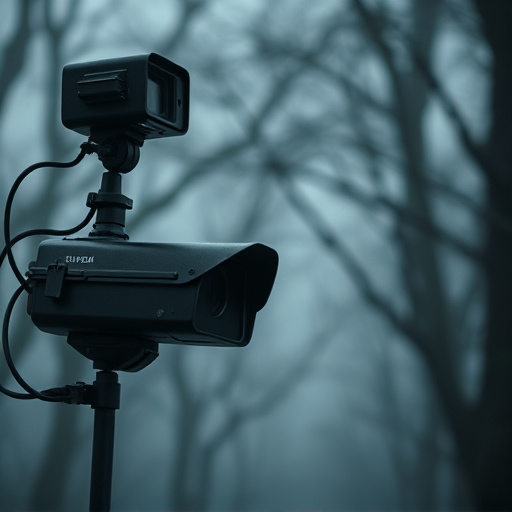This text explores different hidden camera types and emphasizes the need for home security against concealed cameras near front doors. It suggests using smartphone apps with thermal imaging and pattern recognition to detect these devices. Visual inspection techniques and privacy films are also recommended. Apps utilize magnetic and infrared sensors, scanning for heat signatures and metal components. A dual approach combining tech and physical security deters intruders, fostering a secure home environment from concealed cameras for front door.
Uncover hidden cameras lurking in plain sight with our comprehensive guide. From understanding various types of concealed cameras to leveraging smartphone apps, this article equips you with practical knowledge to detect and prevent privacy invasions. Learn effective visual inspection techniques and explore innovative tools like magnetic and infrared devices. Additionally, discover proactive measures to secure your space, especially targeting hidden cameras on front doors. Stay vigilant and take control of your privacy in today’s digital age.
- Understanding Hidden Camera Types
- Smartphone Apps for Detection
- Visual Inspection Techniques
- Using Magnetic and Infrared Tools
- Preventing and Securing Against Cameras
Understanding Hidden Camera Types
Hidden cameras, also known as concealed or covert cameras, come in various types designed for different purposes. Understanding these types is crucial when employing smartphone methods to detect them. One common type is the pinhole camera, often disguised as a small button or doorknob, which captures video or images discreetly. Another is the Wi-Fi hidden camera, typically placed indoors and connected to your home network, making it accessible via a smartphone app for remote viewing. Additionally, there are RF (Radio Frequency) hidden cameras that use RF signals to transmit footage, allowing for more extensive range but potentially vulnerable to signal interference.
When it comes to protecting your front door from concealed cameras, awareness is key. Regularly inspect door handles and any potential hiding spots with the help of your smartphone’s camera and lighting. Look for unusual markings or signs of tampering. If you suspect a front door hidden camera, consider using privacy films or covers designed to block visual sensors, though keep in mind these might not be foolproof against advanced technology.
Smartphone Apps for Detection
Smartphone apps have emerged as powerful tools in the quest to detect hidden cameras, offering an accessible and convenient solution for individuals concerned about privacy. These applications utilize a combination of advanced sensors, image analysis algorithms, and user-friendly interfaces to help users identify potential concealed surveillance devices.
One notable focus area is the detection of concealed cameras for front door scenarios. Dedicated apps employ thermal imaging technology and visual pattern recognition to scan for heat signatures or unusual patterns that might indicate the presence of a hidden camera. By analyzing light reflections, shadows, and pixel anomalies, these apps provide users with real-time alerts and visual feedback, ensuring they can take immediate action to secure their spaces.
Visual Inspection Techniques
Visual inspection techniques are a crucial first step in detecting hidden cameras, especially those strategically placed like Concealed Cameras for Front Door. By employing simple yet effective methods, smartphone users can enhance their privacy. One approach is to examine the door’s surface for any unusual markings, bumps, or adhesive residue that might indicate the presence of a camera. This visual scan can be done quickly and discreetly from a safe distance.
Additionally, utilizing your phone’s flash feature in low-light conditions can reveal hidden components. Shining light into potential hiding spots may cause cameras to reflect light differently, making them more visible. Such techniques empower individuals to take proactive measures in securing their homes, ensuring that privacy is not compromised without thorough examination.
Using Magnetic and Infrared Tools
Detecting hidden cameras, especially those strategically placed like concealed cameras for front door, has become a concern for privacy-conscious individuals. Smartphone apps have emerged as powerful tools to help in this quest. Among them, magnetic and infrared sensors offer unique capabilities. Magnetic detectors can identify small metal components often found in camera hardware, while infrared tools scan for heat signatures, which are emitted by electronic devices like hidden cameras.
Combining these methods allows users to create a comprehensive approach. First, a magnetic scanner can quickly survey an area for potential metal components. If something suspicious is detected, an infrared camera can then be used to visualize heat patterns, potentially revealing the presence of a hidden device. This dual-approach ensures that both visible and non-visible elements are considered in the search for concealed cameras for front door or other hidden surveillance equipment.
Preventing and Securing Against Cameras
Preventing and securing against hidden cameras, especially those strategically placed near front doors, is an essential step in safeguarding your privacy. One effective method is to use smartphone applications designed for camera detection. These apps utilize various technologies like thermal imaging and image analysis to identify suspicious devices. By regularly scanning your surroundings, you can uncover hidden cameras, ensuring your conversations and activities remain private.
Additionally, physical security measures should not be overlooked. Upgrading door locks with advanced security systems, installing motion sensors, and adopting a vigilant mindset can significantly deter would-be intruders from setting up concealed cameras. Combining these technological and physical precautions is key to maintaining a secure home environment, especially when addressing the growing concern of front door hidden cameras.
Detecting hidden cameras using smartphone methods is a valuable skill in today’s digital age, where privacy concerns are paramount. From understanding various camera types to employing specialized apps and tools like magnetic detectors and infrared technology, you can create a robust defense against covert surveillance. Remember that prevention is key; securing your home, especially with measures like reinforcing front door areas, significantly reduces the risk of concealed cameras. By combining these practical techniques, you can ensure a safer, more private living environment.
